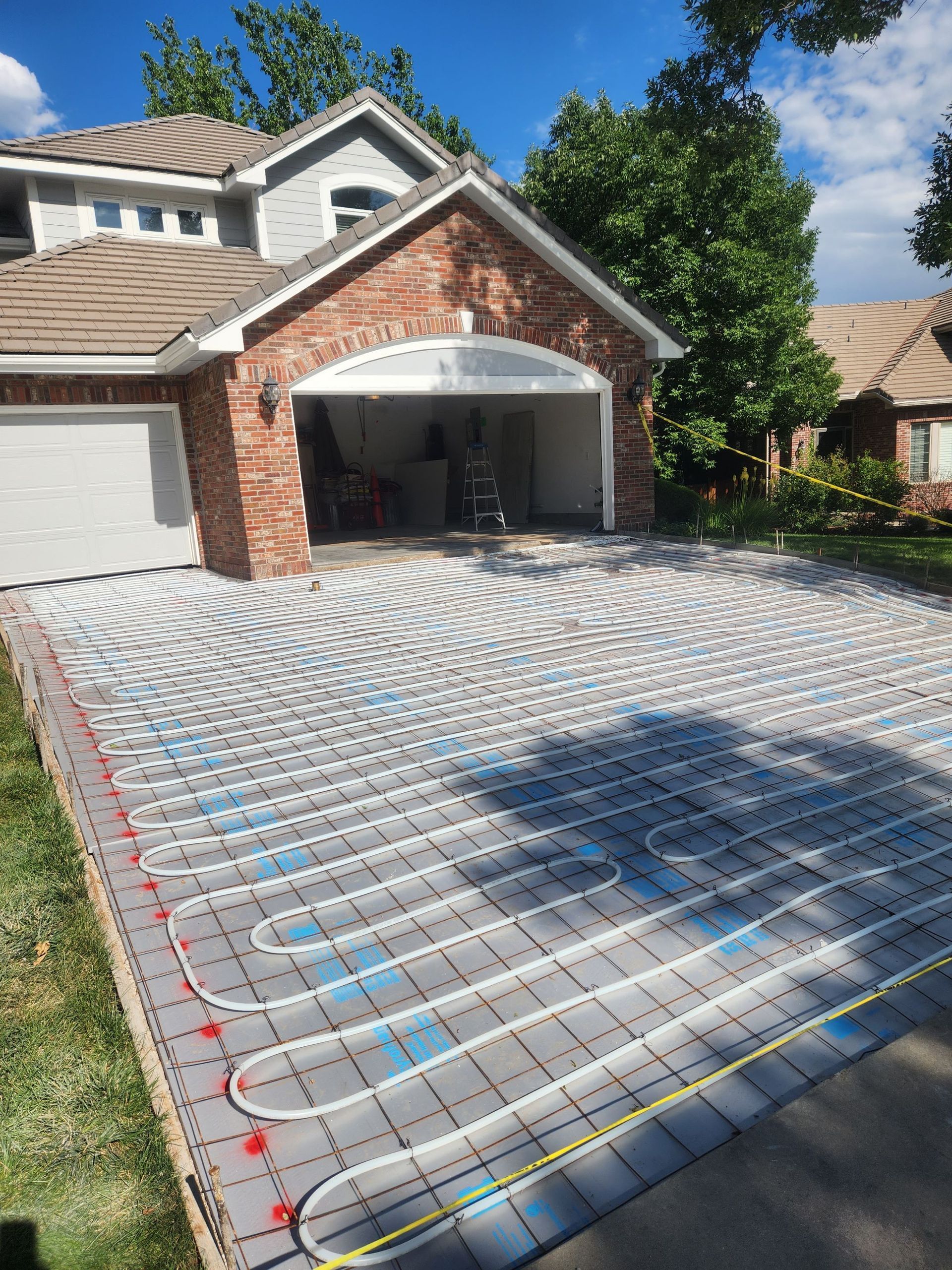Snow melt systems in Denver
Snow melt systems keep driveways, walks, and entries clear without shoveling or chemical treatment. Advanced Hydronics designs systems that fit Denver’s changing climate and your property layout, using smart controls and durable tubing to deliver dependable performance through every winter storm.
Clear paths when the weather turns

Hydronic snow melt systems circulate warm fluid through tubing embedded in concrete, pavers, or asphalt surfaces. Sensors monitor temperature and moisture, activating the system only when snow or ice begins to form. The result is automatic, efficient melting that protects surfaces and keeps access points safe with minimal energy use.
Full Automation
Automatic sensors detect outdoor temperature and moisture, activating the system only when conditions require it. Once surfaces are clear, the system shuts itself down, minimizing energy use while keeping driveways and walks safe around the clock.
Eliminates Sanding and Salting
By melting snow and ice at the source, hydronic systems eliminate the need for sand or salt that can damage finishes and create mess. Home interiors stay cleaner, and exterior materials last longer without chemical corrosion or abrasive wear.
Less Pavement Damage
Because the surface never experiences deep freezing, hydronic snow melt prevents frost heave and cracking caused by temperature swings. This protection helps extend the lifespan of concrete, asphalt, and paver installations across Denver’s harsh winter cycles.
Improved Appearance
No snowbanks, piles, or residue detract from your home’s design. Heated surfaces stay clear and dry, maintaining curb appeal and accessibility throughout the season.
Landscape Protection
Eliminating chemical deicers reduces salt and runoff exposure that harm lawns, plantings, and stonework. Hydronic snow melt preserves the appearance of your landscaping and surrounding materials while keeping pathways safe.
Why Many Choose Hydronics
Hydronic snow melt pairs comfort with safety by taking shoveling off the list and limiting refreeze. For a full overview of water based comfort across the home, read why choose hydronics to see how these systems compare to electric options.
Benefits of snow melt systems
- Clear, dry paths with better traction
- No shoveling or salt on finished surfaces
- Automatic operation based on real conditions
- Scalable coverage for tracks or full areas
- Reliable performance in steep or shaded sites
Planning and Maintaining Your Snow Melt System
How automatic are snow melt systems?
Fully automatic. Sensors monitor both temperature and moisture, activating the system only when snow or ice begins to form. Once the area is clear and dry, the system shuts down to conserve energy.
What types of surfaces can be heated?
Snow melt systems work well under concrete, asphalt, and pavers. We design each layout to match the material’s thermal characteristics and ensure uniform melting across the entire surface.
Can my existing boiler support a snow melt system?
Sometimes. We calculate available boiler capacity and may recommend a heat exchanger or dedicated boiler to keep the home’s heating system separate from the snow melt loop. This ensures reliable performance and proper system balance.
How efficient are snow melt systems?
Modern systems use sensors, zoning, and weather-based controls to minimize runtime and energy use. Proper design ensures fast response times without excessive standby heating, providing clear, dry surfaces only when needed.
Do snow melt systems require maintenance?
Yes, but only seasonally. We check glycol levels, pump operation, and sensor calibration each fall to ensure the system is ready for winter. Routine maintenance protects equipment and ensures dependable automatic operation.
What happens if the system runs during heavy snowfalls?
The system is designed to run continuously during storms, preventing buildup rather than melting large accumulations afterward. This approach keeps surfaces clear and safe, even during sustained snowfall.
